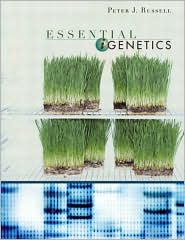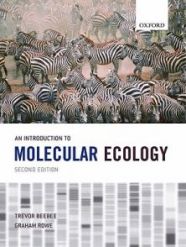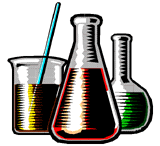Autumn
2012
FISH/BIOL 340 - Genetics and Molecular Ecology
Reading
Textbooks
There is no required textbook in this class. There are two recommended textbooks, depending on your background. However, if you have a genetics textbook or an extensive introductory text already, you may not need either. Page numbers I provide at the end of each lecture refer to Russel (2003) Essential iGenetics.
 |
|
 |
|
Two other useful books are:
- Hallerman E.M. (ed) (2003) Population Genetics: Principles and Applications for Fisheries Scientists. American Fisheries Society, Bethesda, Maryland.
- Good book on population genetics. Some of the chapters are in the required readings. Available online from the American Fisheries Society, and relatively cheap if you are a member.
- Freeman S & Herron JC (2007) Evolutionary Analysis. 4th edition. Prentice Hall.
- A very good book to read up about the background of specific topics. Both authors are lecturers in the Department of Biology - this book is required text for their courses. If you are interested in evolutionary research, this is definitely the book to buy, and it also covers a lot of the class materials.
I have put these books on 4 hour loan reserve in the Odegaard Undergraduate Library.
Required Readings
Book Chapters
These chapters are required reading and may end up on the exams. Have a look at the syllabus to get an idea when these chapters should be read.- Hallerman et al (2003) An Overview of Classical and Molecular Genetics.
- Chapter from Hallerman, E.M. (ed) Population Genetics: Principles and Applications for Fisheries Scientists. American Fisheries Society, Bethesda, USA. - (Large file ~2MB). A good overview of Mendelian inheritance, the Hardy-Weinberg law and basic molecular biology.
- Russel P.J. (2002) Population Genetics.
- Chapter from the book below (iGenetics), providing a brief but exhaustive overview of population genetics. Big file (12MB).
- Russel P.J. (2002) Molecular Evolution.
- Chapter from the book below (iGenetics), providing a brief overview of some aspects of phylogenetic reconstruction. Big file (5MB).
- Hauser L (2007) The Molecular Ecology of Dogfish Sharks
- Recent review I wrote on the genetics of sharks in general and dogfish in particular. I won't ask anything specifically about this paper in the exam, but it describes some of the concepts we discussed in lecture and may therefore be useful reading material for exam preparation. It covers almost everything from phylogenetics to population genetics to parentage analysis, to an outlook on new genomic techniques
Labs
There are a few important papers for the lab project. Make sure to read them for your project report:
- Vincent, A.C.J., Foster, S.J., Koldewey, H.J. (2011) Conservation and management of seahorses and other Syngnathidae. Journal of Fish Biology 78, 1681-1724.
- Foster, S.J., Vincent, A.C.J. (2005) Enhancing sustainability of the international trade in seahorses with a single minimum size limit. Conservation Biology 19, 1044-1050.
- Logan, C.A., Alter, S.E., Haupt, A.J., Tomalty, K., Palumbi, S.R. (2008) An impediment to consumer choice: overfished species are sold as Pacific red snapper. Biological Conservation 141, 1591-1599.
- You should use additional references for your report, but you can start with these papers.
-
Suggested Readings
Weekly scientific papers
For each week, we will provide a brief scientific paper, which is suggested reading to show you the applications of different methods (see Syllabus). The content of these papers is not on the exam per se, but I may use them as examples for material covered in lecture.
Week 1
Shivji MS, Chapman DD, Pikitch EK, Raymond PW (2005) Genetic profiling reveals illegal international trade in fins of the great white shark, Carcharodon carcharias. Conservation Genetics 6, 1035-1039. ( National Geographic Article on the paper).
Week 3
Russell AF, Hatchwell BJ (2001) Experimental evidence for kin-biased helping in a cooperatively breeding vertebrate. Proceedings Of The Royal Society Of London Series B-Biological Sciences 268, 2169-2174.
Week 4
Hoarau G, Boon E, Jongma DN, Ferber S, Palsson J, Van der Veer HW, Rijnsdorp AD, Stam WT, Olsen JL (2005) Low effective population size and evidence for inbreeding in an overexploited flatfish, plaice (Pleuronectes platessa L.). Proceedings Of The Royal Society B-Biological Sciences 272, 497-503.
Week 5
Zerjal T, Xue YL, Bertorelle G, Wells RS, Bao WD, Zhu SL, Qamar R, Ayub Q, Mohyuddin A, Fu SB, Li P, Yuldasheva N, Ruzibakiev R, Xu JJ, Shu QF, Du RF, Yang HM, Hurles ME, Robinson E, Gerelsaikhan T, Dashnyam B, Mehdi SQ, Tyler-Smith C (2003) The genetic legacy of the mongols. American Journal Of Human Genetics 72, 717-721.
Week 6
Seielstad MT, Minch E, Cavalli-Sforza LL (1998) Genetic evidence for a higher female migration rate in humans. Nature Genetics 20, 278-280.
Oota H, Settheetham-Ishida W, Tiwawech D, Ishida T, Stoneking M (2001) Human mtDNA and Y-chromosome variation is correlated with matrilocal versus patrilocal residence. Nature Genetics 29, 20-21.
Week 7
Shaw KL (2002) Conflict between nuclear and mitochondrial DNA phylogenies of a recent species radiation: What mtDNA reveals and conceals about modes of speciation in Hawaiian crickets. Proceedings Of The National Academy Of Sciences Of The United States Of America 99, 16122-16127.
Week 8
Devlin RH, D'Andrade M, Uh M, Biagi CA (2004) Population effects of growth hormone transgenic coho salmon depend on food availability and genotype by environment interactions. Proceedings Of The National Academy Of Sciences Of The United States Of America 101, 9303-9308.
Week 9
Boutet I, Meistertzheim AL, Tanguy A, Thebault MT, Moraga D (2005) Molecular characterization and expression of the gene encoding aspartate aminotransferase from the Pacific oyster Crassostrea gigas exposed to environmental stressors. Comparative Biochemistry And Physiology C-Toxicology & Pharmacology 140, 69-78.
Week 10
Walsh MR, Munch SB, Chiba S, Conover DO (2006) Maladaptive changes in multiple traits caused by fishing: impediments to population recovery. Ecology Letters 9, 142-148.
Another good source of information is Google and Google Scholar - it is amazing what you can find on the internet. However, be careful what you believe - generally, you should only trust academic (i.e. University, Colleges, Institutes) or peer-reviewed (e.g. journals) sites.





